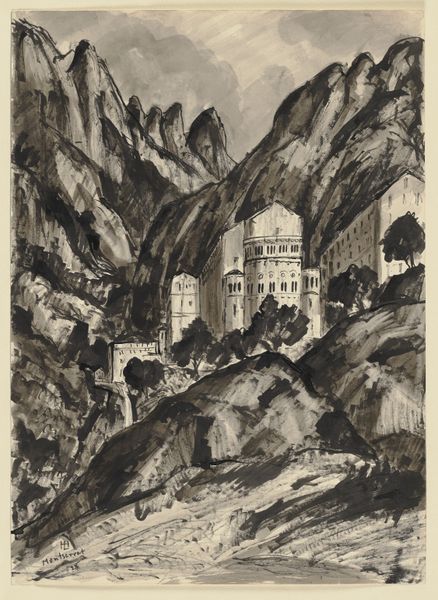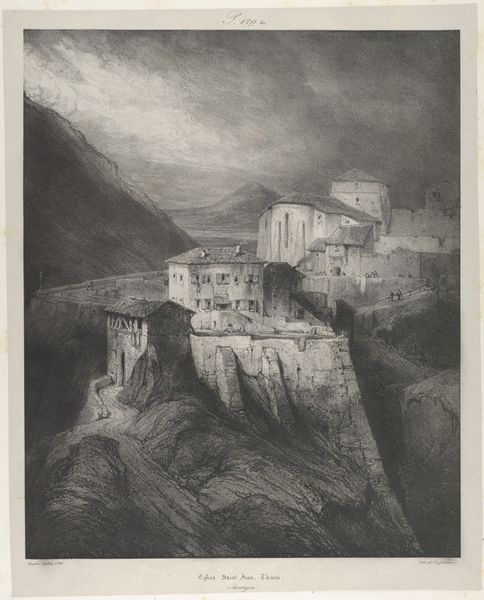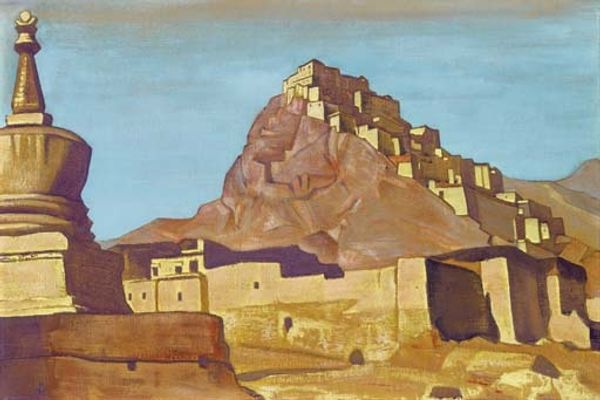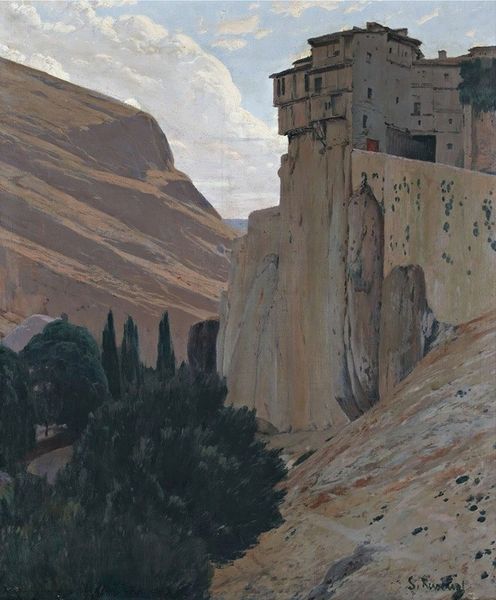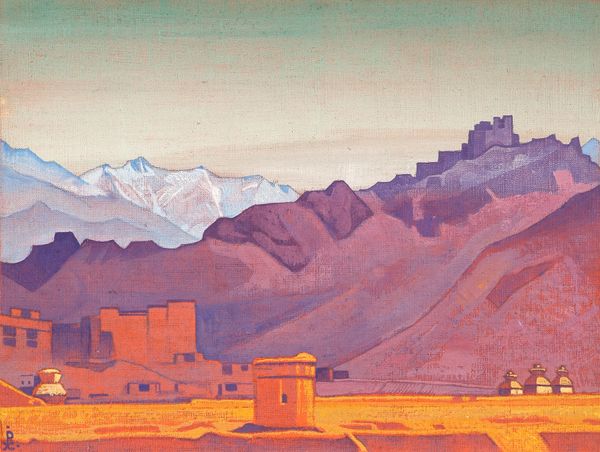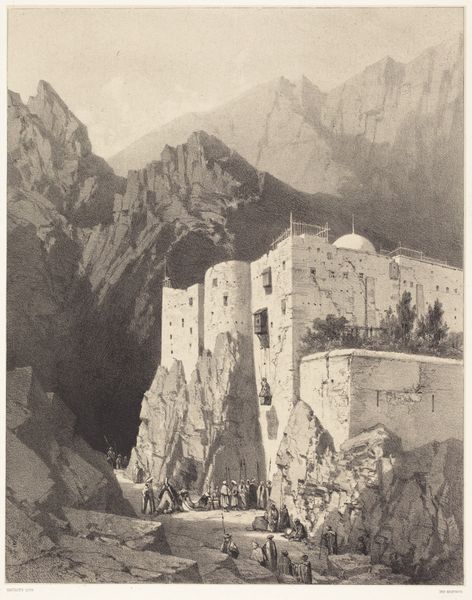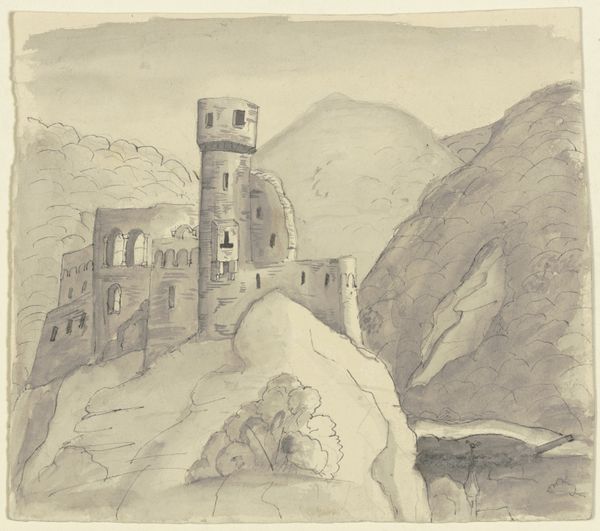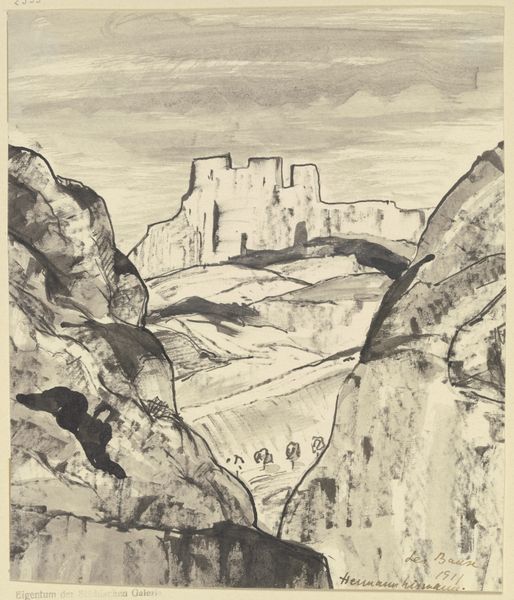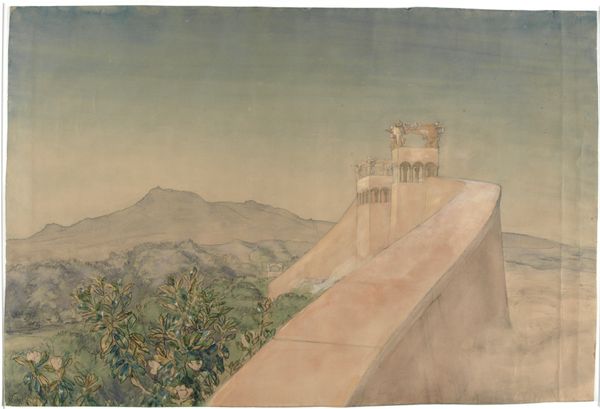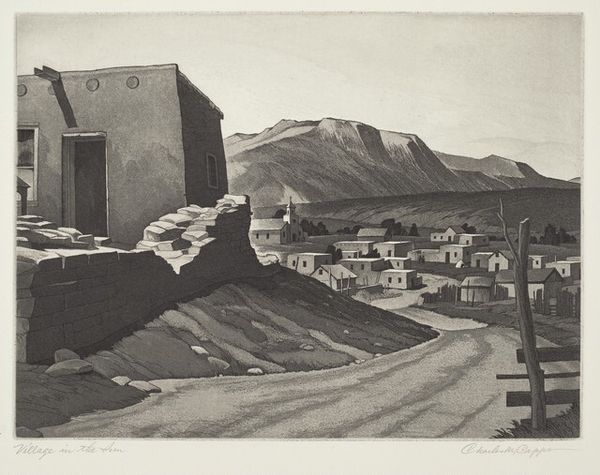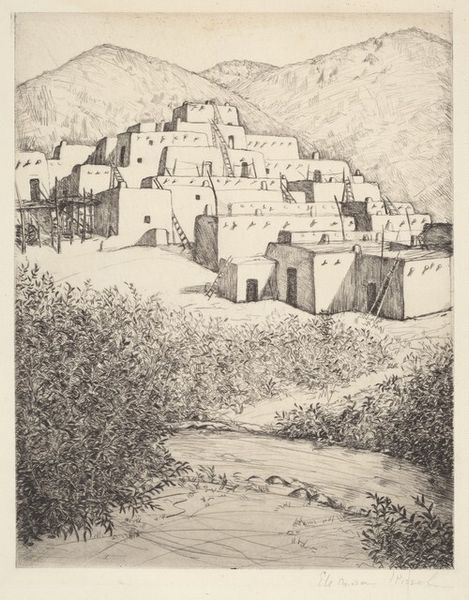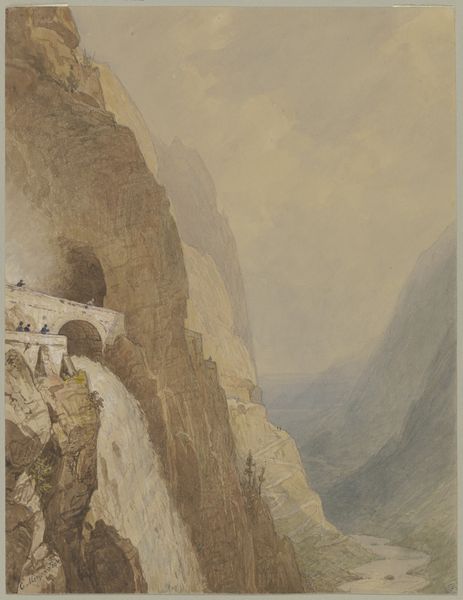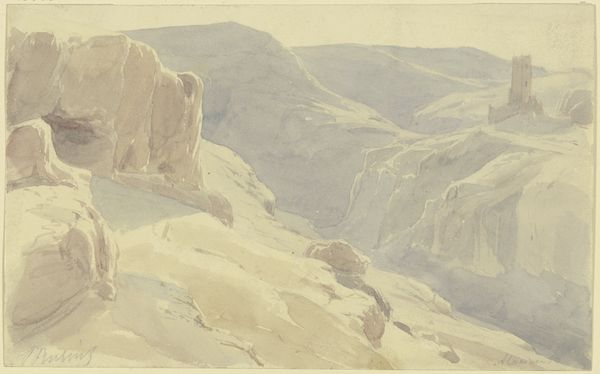
Copyright: Public domain
Curator: Ivan Bilibin created this watercolor in 1924, titled "Monastery of St. George Hosevita. Palestine". It's a fascinating example of Orientalism blending with his work within the Russian avant-garde movement. Editor: Immediately, I’m drawn to the ochre hues—the layers of sediment feel almost palpable. And there’s a sense of quiet solitude in that structure carved into the landscape. Curator: Bilibin traveled extensively, and his interpretations often carried a nationalistic lens. Palestine in the 1920s was under British Mandate; understanding this colonial context adds layers to his representation. What purpose does this representation of architecture serve, and whom does it serve? Editor: Absolutely. Look closely at the paint application—thin washes build the rocky face, and precise, almost technical lines form the buildings. The contrast highlights the material nature of both, drawing them as made of stone, while hinting at the labor needed for their making. How were these watercolor pigments sourced? Curator: Those fine lines you mention are quite characteristic of Bilibin’s graphic style, honed from his book illustrations rooted in Russian folklore. The stylized portrayal of a "foreign" place speaks to the romanticized, and often politicized, view of the East at the time. How did this image, its accessibility, shape opinions, especially back home? Editor: That's compelling. Note also the interplay between the built environment and nature, however harsh this setting is; Bilibin renders the rocks with a geometric clarity that mimics the building's design. It emphasizes a human intervention into this barren space and is dependent on the available materials and knowledge. Curator: Bilibin’s choice to depict this monastery resonates with the artistic interests prevalent among Russian artists in the early 20th century – a fusion of spirituality and cultural identity against the backdrop of modernization. What did his audiences extract from a vision of the Holy Land as rendered through his distinct, almost fairytale-like aesthetic? Editor: It prompts questions about cultural exchange and translation. The image is deceptively simple but carries so much cultural baggage. I appreciate the artist drawing attention to craft and matter! Curator: It's a perspective that definitely complicates a simple appreciation of this visually appealing, yet politically charged, piece. Editor: Precisely! A blend of place, labor and historical understanding yields more questions.
Comments
No comments
Be the first to comment and join the conversation on the ultimate creative platform.
